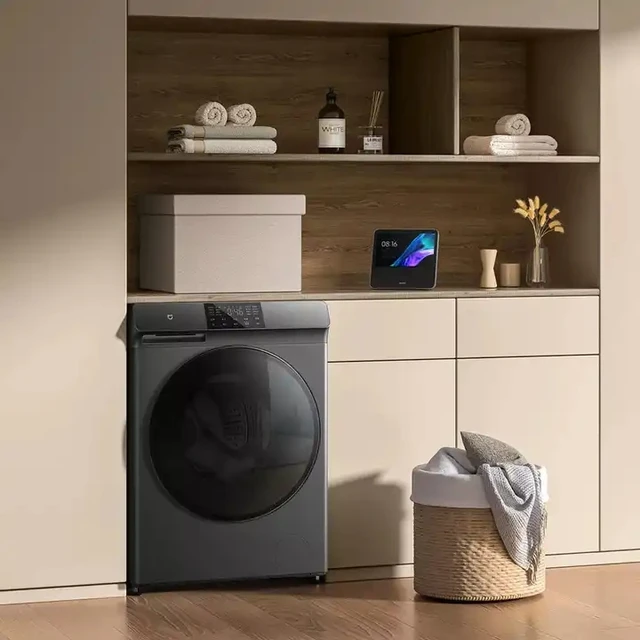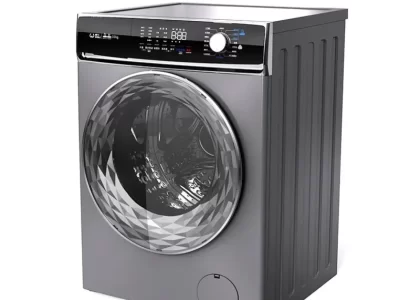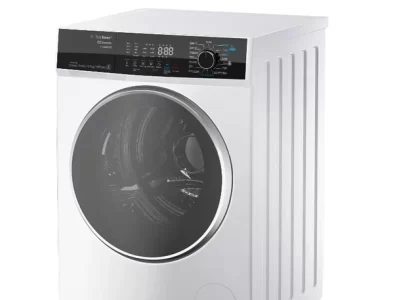 Introduction:
Introduction:
The cleanliness and maintenance of shoes are essential for their longevity and overall appearance. There is a common belief that throwing shoes into the washing machine is a quick and efficient way to clean them. However, this method may not always be suitable or effective for all types of shoes. In this comprehensive guide, we will debunk the myth surrounding washing shoes in the washing machine. We will explore the potential risks and considerations, as well as alternative methods for cleaning different types of shoes.
 Here are some common types of washing machines:
Here are some common types of washing machines:
There are several types of washing machines available on the market, each with its own features and functionality. Here are some common types of washing machines:
Top-Load Washing Machines:
This type of washing machine has a vertical drum located at the top of the machine. Clothes are loaded from the top, and the machine typically has a lid or door that opens upwards. Top-load washers are generally more affordable and may have shorter wash cycles. They are suitable for those who prefer a traditional design.
Front-Load Washing Machines:
Front-load washing machines have a horizontal drum located at the front of the machine. Clothes are loaded through a door that opens outward. Front-load washers are known for being more energy-efficient, using less water and electricity compared to top-load washers. They often have larger capacities and various advanced features but can be more expensive.
High-Efficiency (HE) Washing Machines:
High-efficiency washing machines are designed to use less water and energy while providing effective cleaning. Both top-load and front-load washers can be classified as high-efficiency. These machines typically have specialized detergents and specific washing cycles to optimize performance.
Compact Washing Machines:
Compact washing machines are smaller in size and ideal for those with limited space or living in apartments, dorms, or smaller homes. They can be either top-load or front-load and usually have reduced load capacities compared to full-sized machines.
Washer-Dryer Combo:
Washer-dryer combo machines combine both washing and drying functions in one unit. They are suitable for those who have limited space and want to avoid having a separate washing machine and dryer.
Portable Washing Machines:
Portable washing machines are compact and designed for easy portability. They are often used as alternatives for travelers, campers, or those without access to traditional laundry facilities. Portable machines are typically small in size and have lower load capacities.
It’s important to consider your specific needs, available space, budget, and desired features when choosing a washing machine. Each type offers different advantages, so it’s recommended to research and compare the options before making a purchase decision.
The Risks of Washing Shoes in the Washing Machine
Damage to Shoe Construction:
Washing shoes in the machine can cause damage to the construction and materials of the shoes.
Aggressive spinning and harsh detergents can weaken stitching, loosen glue, and deform shoe shapes.
Staining and Discoloration:
Some shoes, especially those made of delicate or light-colored materials, are prone to staining and discoloration in the washing machine.
Certain dyes and finishes used in shoe manufacturing may not withstand the water and detergent combination.
Loss of Shoe Support and Shape:
Shoes with built-in arch support or specialized cushioning may lose their original shape or structural integrity when subjected to the agitating motion and pressure of the washing machine.
 Alternative Methods for Cleaning Shoes
Alternative Methods for Cleaning Shoes
Spot Cleaning and Gentle Detergents:
Instead of machine washing, consider spot cleaning shoes using a soft cloth, gentle detergent, and warm water.
Gently scrubbing stains or dirt marks can effectively remove grime without compromising the shoe’s construction.
Hand Washing:
Hand washing is an alternative method that requires more time and effort but is gentler on shoes.
Fill a basin with warm water and mild soap or shoe cleaner, and use a soft brush or cloth to clean the shoes.
Shoe-Specific Cleaning Products:
Many shoe manufacturers offer cleaning products specifically formulated for different shoe materials and types.
Using these products can provide a safe and effective way to clean and maintain the integrity of your shoes.
Shoe-Specific Cleaning Methods
Sneakers and Canvas Shoes:
Remove laces and insoles, then hand wash or use a soft brush and gentle detergent to clean the exterior.
Air-dry them in a well-ventilated area to avoid shrinkage or damage.
Leather Shoes:
Wipe off surface dirt with a damp cloth, then use a leather-specific cleaner and conditioner to nourish and protect the leather.
Polish with a clean cloth to restore shine and maintain the suppleness of the leather.
Suede or Nubuck Shoes:
Special care is needed for cleaning suede or nubuck shoes, as water can damage these delicate materials.
Use a suede brush or eraser to remove stains and scuffs gently, and consider using specialized sprays or cleaning kits for more thorough cleaning.
 Additional Shoe Care Tips
Additional Shoe Care Tips
Regular Shoe Maintenance:
Implementing a regular cleaning routine and practicing preventive measures, such as using shoe trees and storing shoes in a proper manner, can extend their lifespan and appearance.
Proper Drying:
Allow shoes to air-dry naturally after any cleaning process, avoiding direct heat sources, which can cause materials to warp or shrink.
Professional Cleaning:
For shoes that need more extensive cleaning or restoration, consult professional shoe cleaners or cobblers who specialize in shoe care.
If your washing machine has a musty or unpleasant odor
If your washing machine has a musty or unpleasant odor, there are several steps you can take to address and eliminate the smell. Here are some solutions:
Clean the Rubber Gasket:
The rubber gasket around the door of the washing machine can often trap moisture, detergent residue, and lint, leading to odors. Clean the gasket thoroughly using a mixture of equal parts water and vinegar. Wipe the gasket with a clean cloth or sponge soaked in the solution, paying extra attention to any visible buildup or mold. Rinse with water afterwards.
Run a Hot Water Cycle with Vinegar:
Fill the washing machine drum with hot water and add two cups of white vinegar. Let the machine run a complete cycle without any laundry. Vinegar helps to remove odors and break down any detergent or fabric softener buildup inside the machine.
Clean the Detergent Dispenser:
Remove the detergent dispenser tray and clean it thoroughly with warm, soapy water. Use an old toothbrush or scrub brush to scrub away any residue or buildup. Rinse it well and allow it to dry completely before reinserting it into the machine.
Check the Drain Hose:
If there is a lingering odor, it could be due to a clogged or dirty drain hose. Disconnect the drain hose from the washing machine and inspect for any blockages or buildup. Clean it using a long brush or pipe cleaner, and rinse with water. Reconnect the hose securely.
Leave the Door Open:
After each use, leave the washing machine door open for some time to allow air circulation and prevent moisture buildup. This helps to prevent the growth of mold and mildew.
Clean the Filters:
Some washing machines have filters or lint traps that can become clogged with debris, leading to odors. Consult your washing machine’s user manual to locate and clean these filters regularly.
Use High-Efficiency Detergent:
High-efficiency (HE) detergents are specifically designed for modern washing machines and help minimize excessive suds and residue. Use the recommended amount of detergent for each load to prevent buildup that can contribute to odors.
Regular maintenance, cleaning, and proper usage of your washing machine can help prevent and eliminate odors. By following these steps, you can ensure that your washing machine remains fresh and odor-free for efficient and effective laundry cleaning.
 Conclusion:
Conclusion:
While it may be tempting to toss shoes in the washing machine for a quick clean, this method can cause damage and compromise the quality of the shoes. Instead, opt for alternative cleaning methods, such as spot cleaning, hand washing, or using shoe-specific cleaning products. By following these methods and considering the specific care requirements of different shoe materials, you can ensure the cleanliness and longevity of your shoes. Remember to practice maintenance and seek professional assistance when needed to keep your shoes looking their best.





